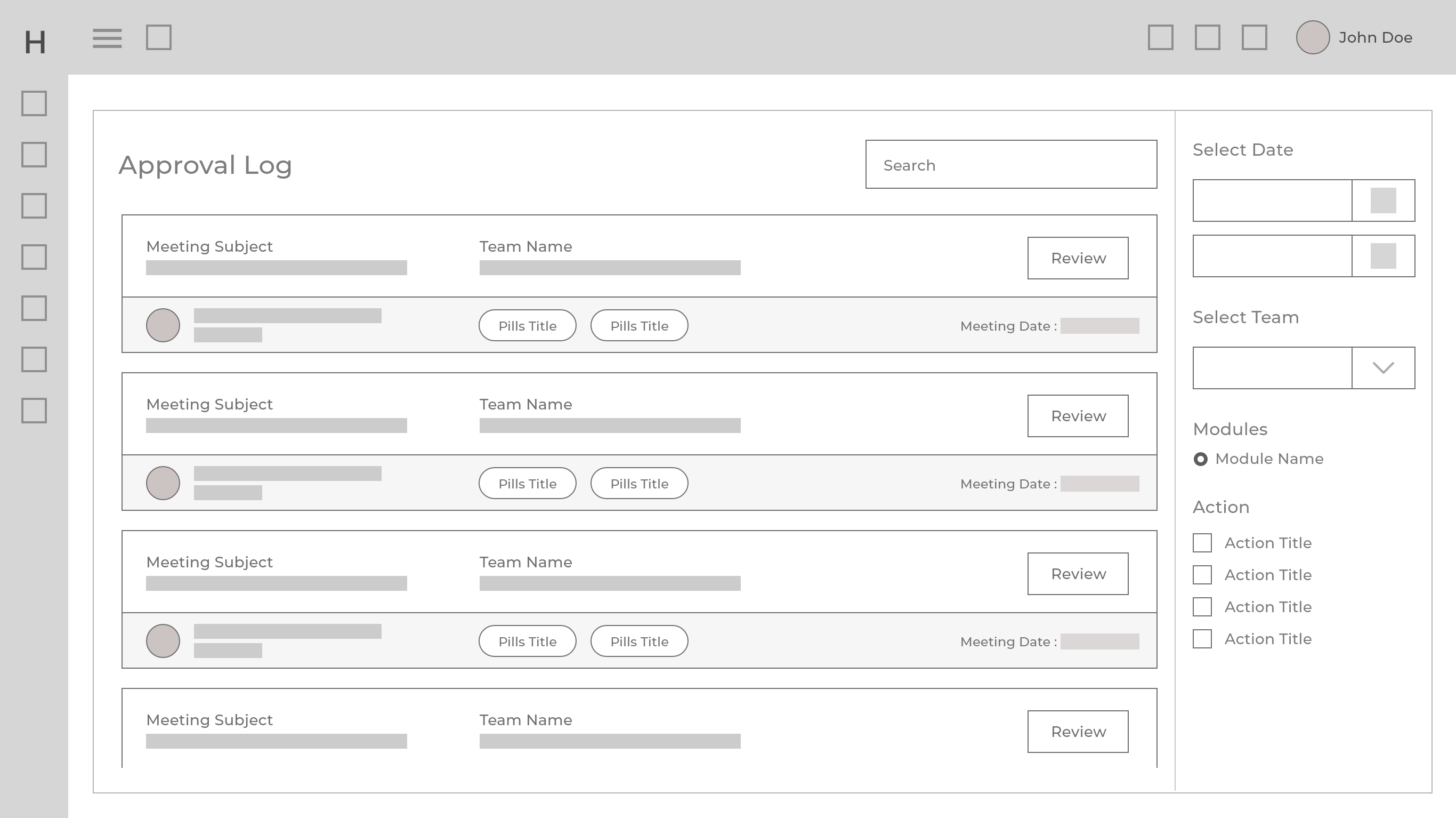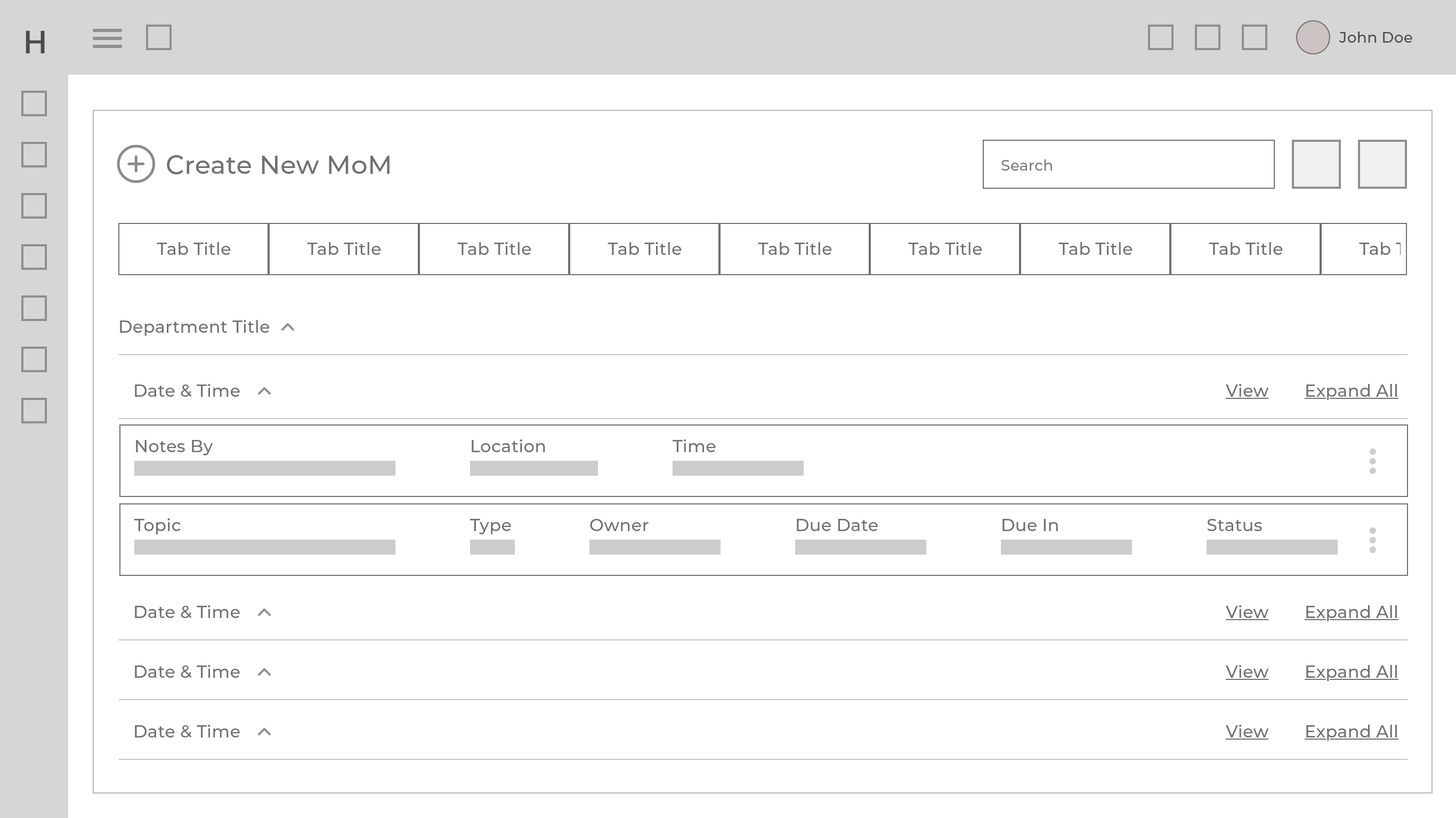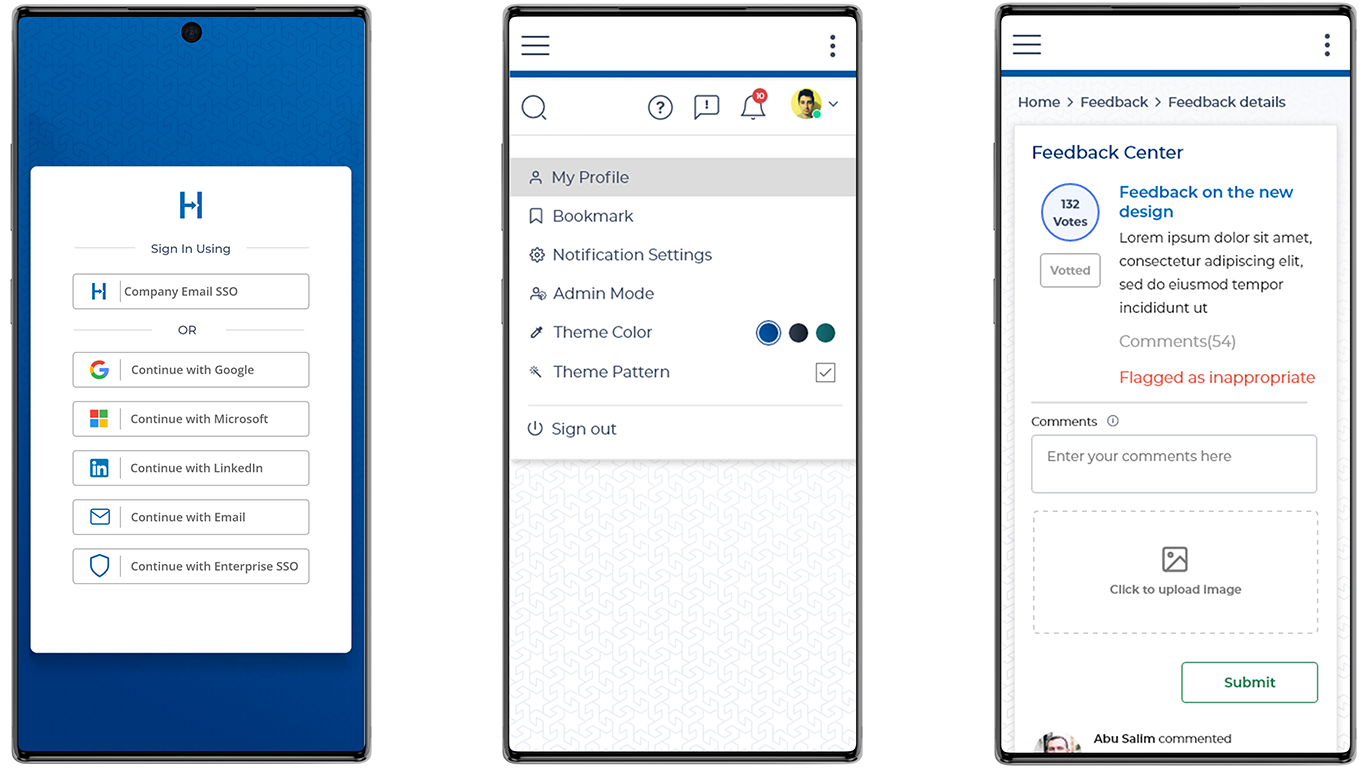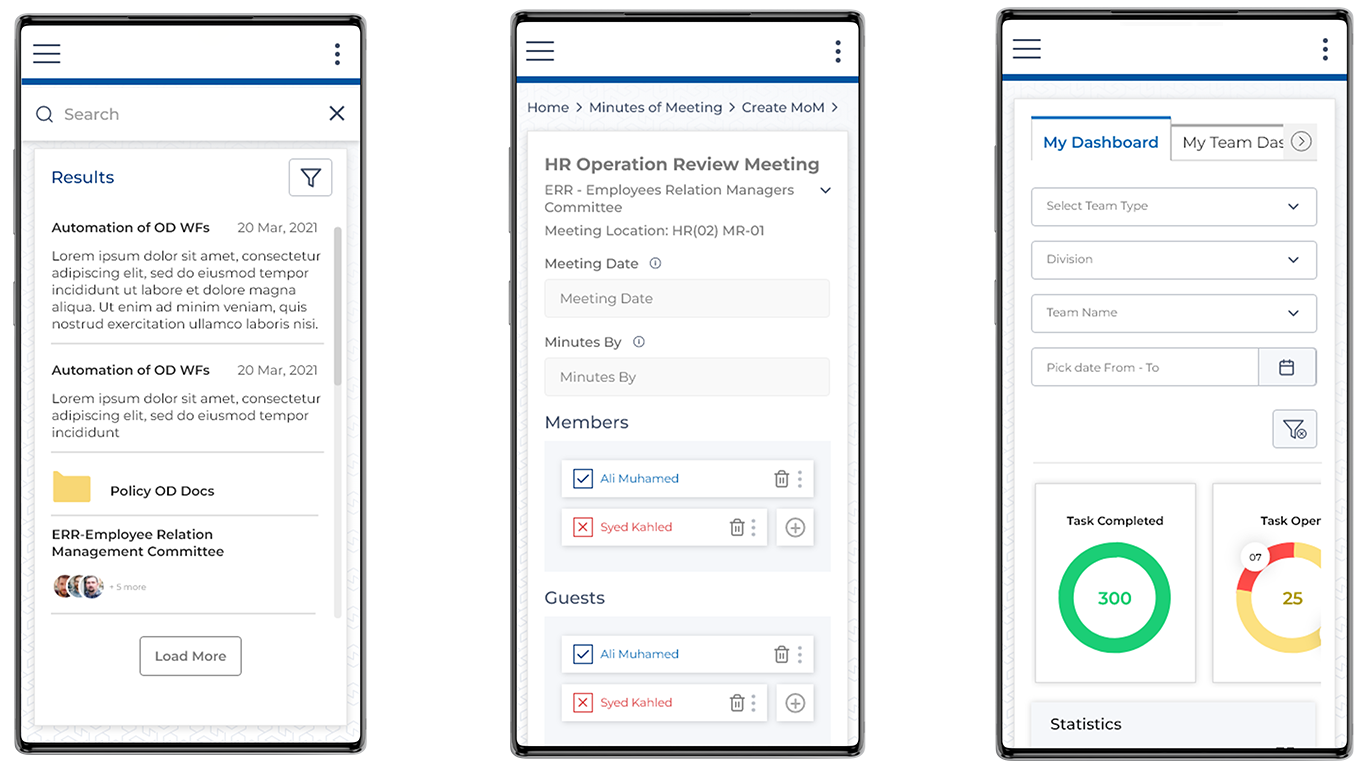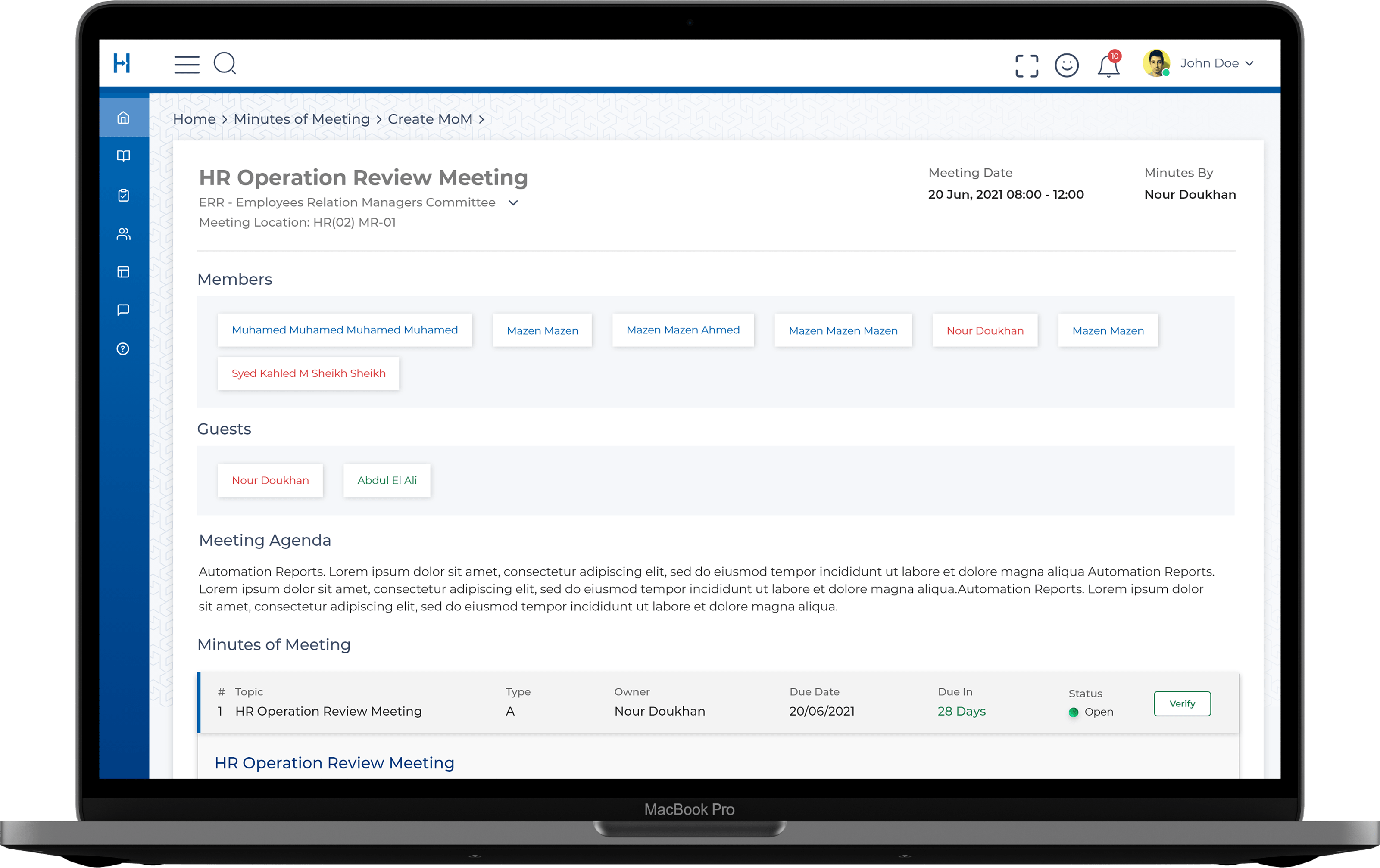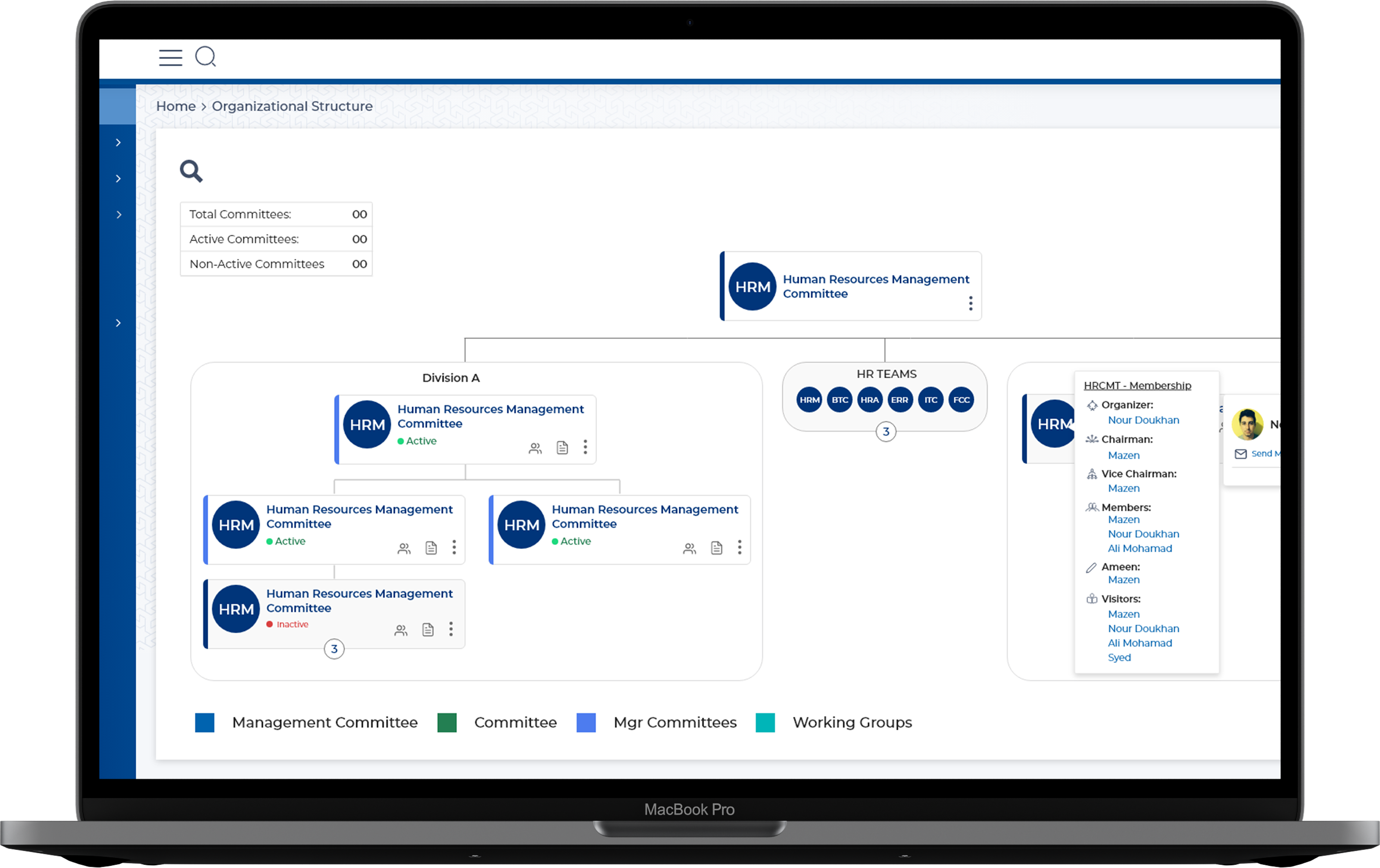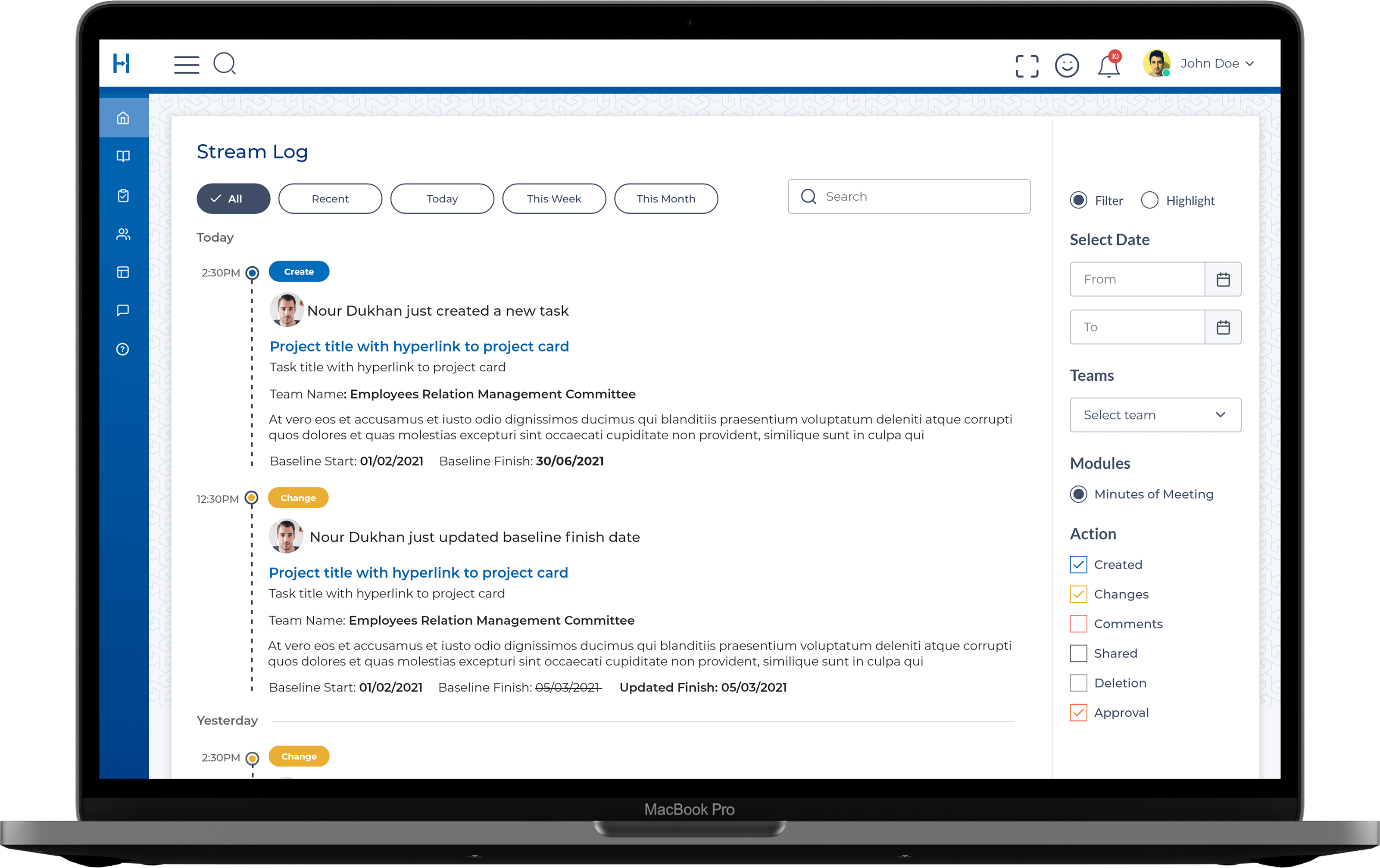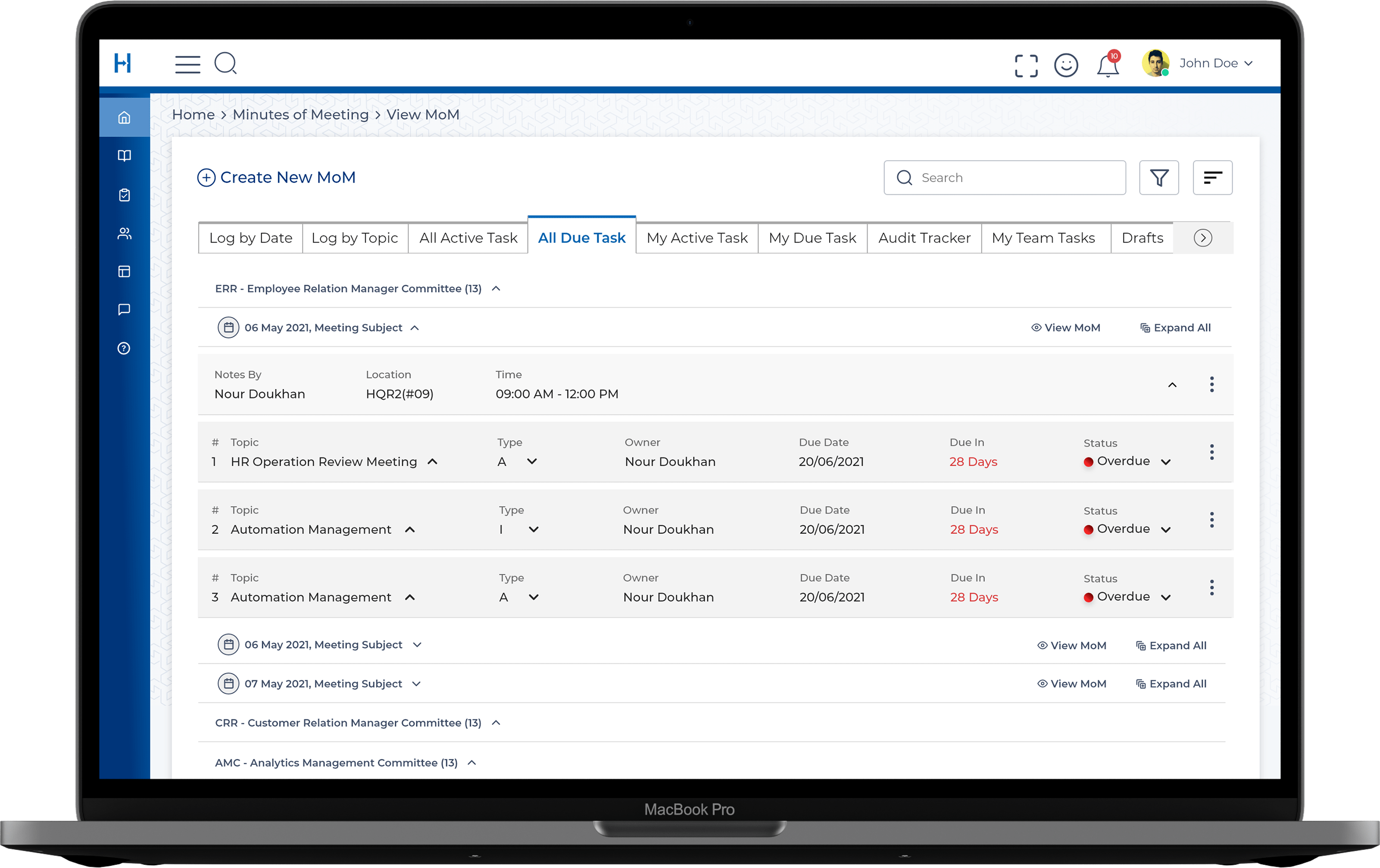Project: Minutes of Meeting
Client: alfanar
Business Requirement
To design a solution that helps employees & their managers to manage all the business-related task in one centralized place and provide meaningful insights with data visualizations along with microservices and thus improving employee productivity and reduce the email follow ups.
My Role
I was part of a large team. Stakeholders of this project were 2 Designers, Business Analysts, 4 Developers, Project Mangers, Technical solution architect and ADM Head. I was responsible for the design of the entire MoM solution for the client. The clients had clear goals on how the user experience should be.
The Challenge
At the start of the project clients shared with us in depth view into how the meeting were conducted within the company. We interviewed employees at clients' company for the first time to understand and learn their pain points.
From these, I was able to gather insights that would help in the creation of flowchart, task flow, user journey, wireframes, & hi-fi prototype. I quickly summarized the issues the clients were dealing with into pain points.
- SharePoint list-based solution.
- Difficult to navigate within solution.
- External users were unable to track the meeting minutes.
- Difficult to manage approvals
- Dependancy on excel to generate the reports
- Assigning tasks and unable to keep track of them.
Approach
The goal here was to design in a way that it would be smooth for the users to transistion from their existing system to the new one. We brainstormed and decided to go with dashboard that would provide clients the ability to manage all business-related task along with data visualization. Design and development were broken into parallel workstreams for the meeting minutes
Each phase of the project was serialized, starting with the design and development. Once each feature was designed and approved, the engineering team began the implementation.
Next, I had to lay out the information architecture.
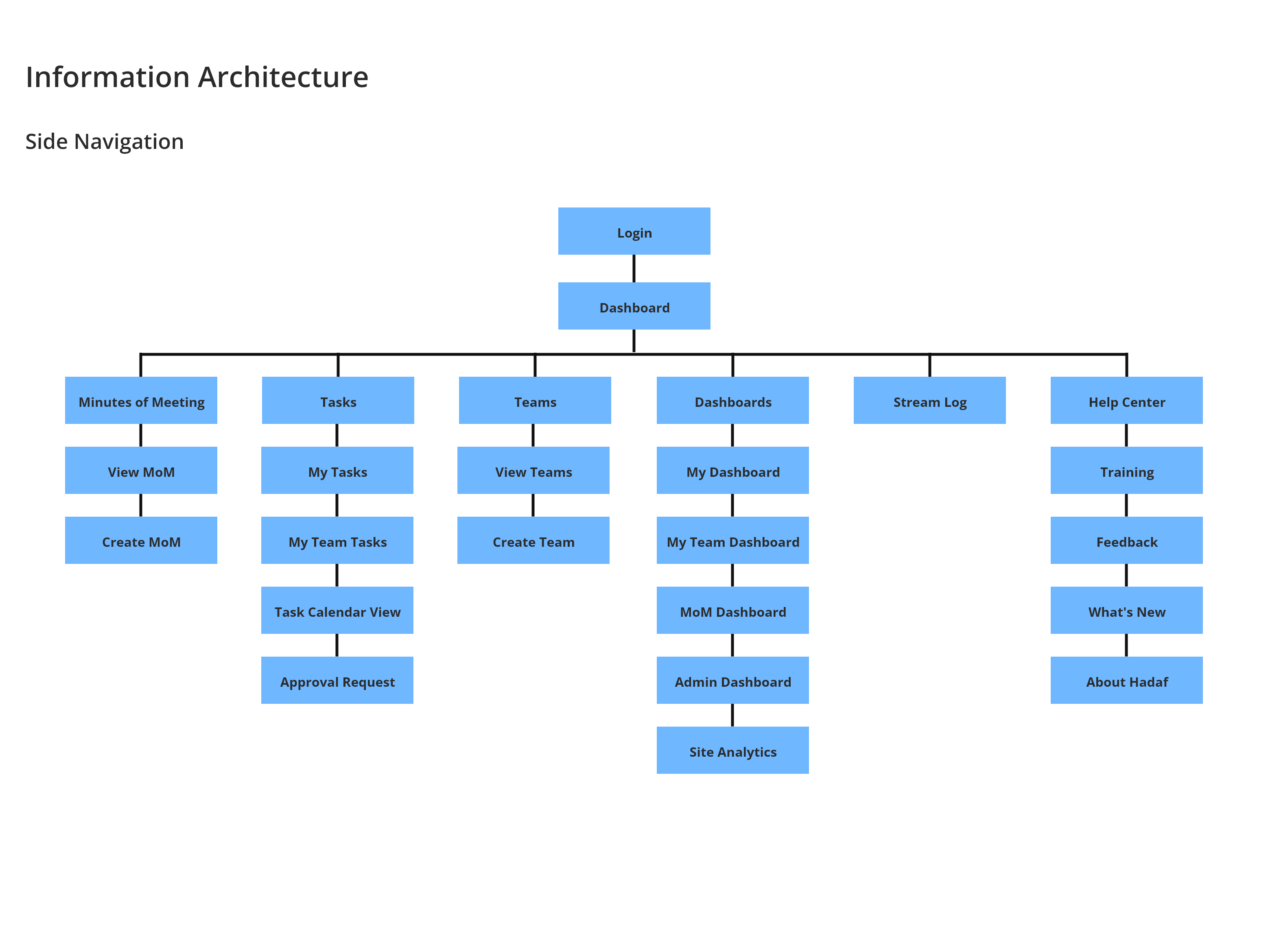

Due to complexity of the project the design phase was broken down into multiple smaller modules. And completion of each module was a milestone. The combination of a fixed launch date and aggressive scope created an intense environment with many coordination and time challenges.
I had to analyze tasks that require decision-making, problem-solving, memory, attention and judgment. The aim here was to compare how a different users might complete the task, to reduce the level of cognitive load required for each step


User Insights
Since the clients shared with us in depth view into how the meeting were conducted within the company, we knew that their mental model relied on a similar experience.
Since the users were accustomed to this mental model, a design system was created that aligned with company brand guidelines, since would be used across different departments.
Detailed Design
The design cycle was categorized into 3 phases
- User module
- Microservices & mobile module
- Admin module
For sketching, I took into consideration where actual meeting took place with members from the team and other departments including guests, where discussing about present agenda or could be from the previous meeting. This could include approvals, task delegation etc. Through this lens, I was able to sketch out ideas
For each design phase, I went through cycles of requirements, consensus, approvals, detailed specs, design iteration and handoffs. For the admin module, I followed the similar design approach.
My process involved sketching concepts and flows with my BA partner and then translating these directly into hi‐fidelity design comps. The documentation required the most rework during the project and was the highest overhead to maintain.


